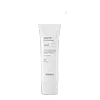What's inside
What's inside
 Key Ingredients
Key Ingredients

No key ingredients
 Benefits
Benefits

 Concerns
Concerns

No concerns
 Ingredients Side-by-side
Ingredients Side-by-side

Water
Skin ConditioningZinc Oxide
Cosmetic ColorantIsononyl Isononanoate
EmollientCaprylyl Methicone
Skin ConditioningPropylheptyl Caprylate
EmollientButylene Glycol
HumectantIsododecane
EmollientButyloctyl Salicylate
Skin ConditioningDisiloxane
Skin ConditioningCI 77891
Cosmetic ColorantAcrylates Copolymer
C12-15 Alkyl Benzoate
AntimicrobialPolyglyceryl-4 Diisostearate/Polyhydroxystearate/Sebacate
EmulsifyingMadecassic Acid
Skin ConditioningAsiatic Acid
Skin ConditioningAsiaticoside
AntioxidantCeramide NP
Skin ConditioningPanthenol
Skin ConditioningEctoin
Skin ConditioningPersea Gratissima Fruit Extract
EmollientSodium Hyaluronate
HumectantHydrolyzed Hyaluronic Acid
HumectantHyaluronic Acid
HumectantSodium Hyaluronate Crosspolymer
HumectantHydrolyzed Glycosaminoglycans
HumectantPolyglyceryl-6 Polyhydroxystearate
EmulsifyingPolymethyl Methacrylate
Polyhydroxystearic Acid
EmulsifyingAcrylates/Polytrimethylsiloxymethacrylate Copolymer
Skin ConditioningDisteardimonium Hectorite
StabilisingMagnesium Sulfate
Dimethicone/Vinyl Dimethicone Crosspolymer
Skin Conditioning1,2-Hexanediol
Skin ConditioningPoly C10-30 Alkyl Acrylate
Emulsion StabilisingPolyglyceryl-3 Polydimethylsiloxyethyl Dimethicone
Skin ConditioningTriethoxycaprylylsilane
Aluminum Hydroxide
EmollientStearic Acid
CleansingPolyglyceryl-6 Polyricinoleate
EmulsifyingPolyglyceryl-2 Dipolyhydroxystearate
Skin ConditioningCeresin
Emulsion StabilisingHydroxyacetophenone
AntioxidantPolyglycerin-6
HumectantTocopherol
AntioxidantAscorbyl Palmitate
AntioxidantMaltodextrin
AbsorbentPropanediol
SolventDipropylene Glycol
HumectantGlycerin
HumectantBenzyl Glycol
SolventEthylhexylglycerin
Skin ConditioningWater, Zinc Oxide, Isononyl Isononanoate, Caprylyl Methicone, Propylheptyl Caprylate, Butylene Glycol, Isododecane, Butyloctyl Salicylate, Disiloxane, CI 77891, Acrylates Copolymer, C12-15 Alkyl Benzoate, Polyglyceryl-4 Diisostearate/Polyhydroxystearate/Sebacate, Madecassic Acid, Asiatic Acid, Asiaticoside, Ceramide NP, Panthenol, Ectoin, Persea Gratissima Fruit Extract, Sodium Hyaluronate, Hydrolyzed Hyaluronic Acid, Hyaluronic Acid, Sodium Hyaluronate Crosspolymer, Hydrolyzed Glycosaminoglycans, Polyglyceryl-6 Polyhydroxystearate, Polymethyl Methacrylate, Polyhydroxystearic Acid, Acrylates/Polytrimethylsiloxymethacrylate Copolymer, Disteardimonium Hectorite, Magnesium Sulfate, Dimethicone/Vinyl Dimethicone Crosspolymer, 1,2-Hexanediol, Poly C10-30 Alkyl Acrylate, Polyglyceryl-3 Polydimethylsiloxyethyl Dimethicone, Triethoxycaprylylsilane, Aluminum Hydroxide, Stearic Acid, Polyglyceryl-6 Polyricinoleate, Polyglyceryl-2 Dipolyhydroxystearate, Ceresin, Hydroxyacetophenone, Polyglycerin-6, Tocopherol, Ascorbyl Palmitate, Maltodextrin, Propanediol, Dipropylene Glycol, Glycerin, Benzyl Glycol, Ethylhexylglycerin
 Reviews
Reviews

Ingredients Explained
These ingredients are found in both products.
Ingredients higher up in an ingredient list are typically present in a larger amount.
Glycerin is already naturally found in your skin. It helps moisturize and protect your skin.
A study from 2016 found glycerin to be more effective as a humectant than AHAs and hyaluronic acid.
As a humectant, it helps the skin stay hydrated by pulling moisture to your skin. The low molecular weight of glycerin allows it to pull moisture into the deeper layers of your skin.
Hydrated skin improves your skin barrier; Your skin barrier helps protect against irritants and bacteria.
Glycerin has also been found to have antimicrobial and antiviral properties. Due to these properties, glycerin is often used in wound and burn treatments.
In cosmetics, glycerin is usually derived from plants such as soybean or palm. However, it can also be sourced from animals, such as tallow or animal fat.
This ingredient is organic, colorless, odorless, and non-toxic.
Glycerin is the name for this ingredient in American English. British English uses Glycerol/Glycerine.
Learn more about GlycerinPropanediol is an all-star ingredient. It softens, hydrates, and smooths the skin.
It’s often used to:
Propanediol is not likely to cause sensitivity and considered safe to use. It is derived from corn or petroleum with a clear color and no scent.
Learn more about PropanediolWater. It's the most common cosmetic ingredient of all. You'll usually see it at the top of ingredient lists, meaning that it makes up the largest part of the product.
So why is it so popular? Water most often acts as a solvent - this means that it helps dissolve other ingredients into the formulation.
You'll also recognize water as that liquid we all need to stay alive. If you see this, drink a glass of water. Stay hydrated!
Learn more about Water